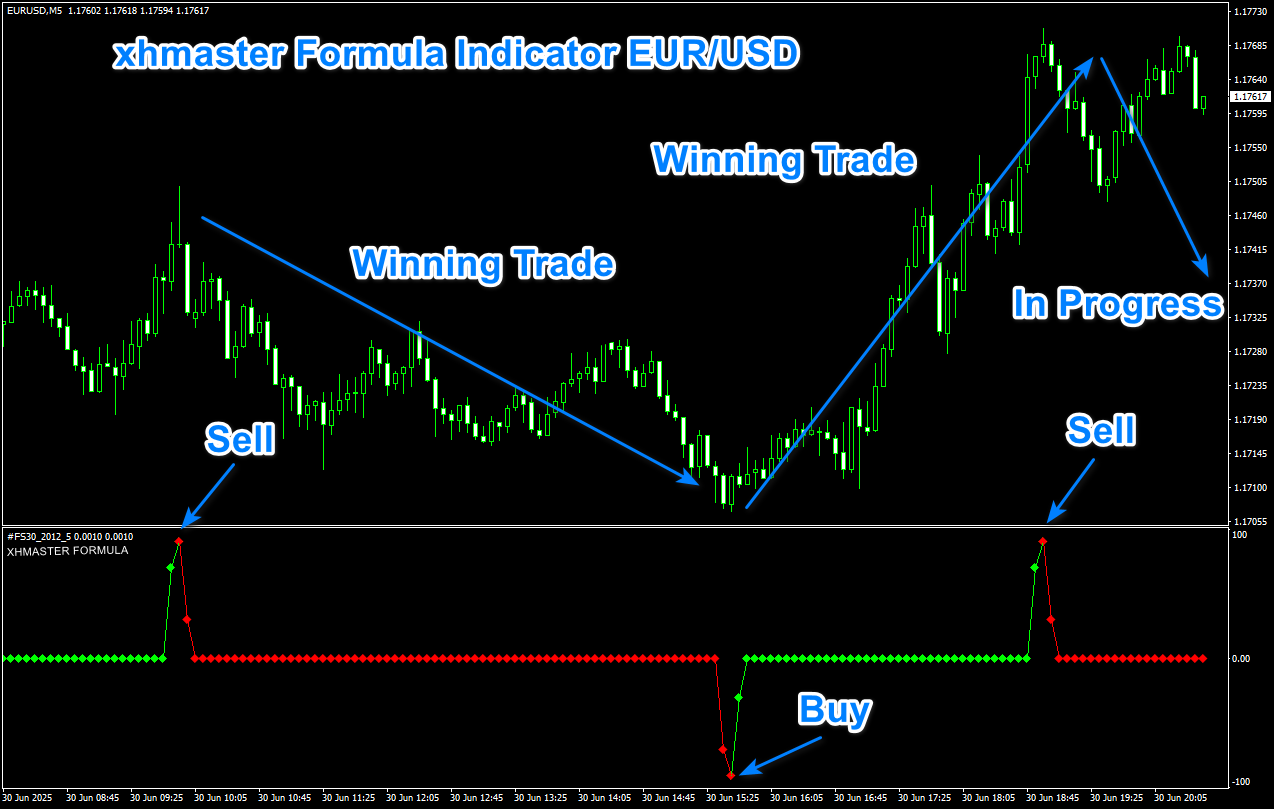The Glasneba indicator for Metatrader 4 (MT4) can be used for both trade entry and exit, or as an additional trend bias confirmation filter for other strategies and systems.
The indicator pops up in a separate MT4 chart window as an oscillator without extreme borders.
The Glasneba Oscillator indicator works equally well on all currency pairs (majors, minors, and exotic) and shows promising results if used correctly.
Free Download
Download the “glasneba.mq4” indicator for MT4
Indicator Chart (EUR/USD M15)
The example chart below displays the Glasneba mt4 indicator in action on the trading chart.
Trading Tips:
Feel free to use your own favorite trade entry, stop loss and take profit method to trade with the Glasneba indicator.
As always, trade in agreement with the overall trend and practice on a demo account first until you fully understand this indicator.
Please note that even the best trading indicator cannot yield a 100% win rate over long periods.
Indicator Specifications & Inputs:
Trading Platform: Developed for Metatrader 4 (MT4)
Currency pairs: Works for any pair
Time frames: Works for any time frame
Trade Style: Works for scalping, day trading and swing trading
Input Parameters: Variable (inputs tab), color settings & style
Indicator type: Oscillator
Does the indicator repaint? No.
Download Now
Download the “glasneba.mq4” indicator for MT4
Glasneba + Simpler Trend Scalping Strategy for MT4
Introduction
This MT4 scalping strategy combines the Glasneba Oscillator with the Simpler Trend Indicator.
The Glasneba Oscillator gives clean momentum-based signals around the zero line, while the Simpler Trend colors candles to show the prevailing trend.
Together, they create a clear and simple system for high-probability scalping trades.
This system works best on 1-minute to 15-minute charts and is ideal for traders who like quick trades with tight risk control.
It suits both beginners who want clear rules and experienced scalpers who need fast decisions.
Focus on major pairs with low spreads, such as EUR/USD, GBP/USD, USD/JPY, or AUD/USD, and apply strict money management.
Why this combo works
The Glasneba Oscillator identifies momentum shifts with a simple above/below zero rule.
The Simpler Trend indicator shows trend direction by coloring candles.
When both indicators agree, you trade with momentum and trend instead of against the market.
This alignment filters out many false signals and keeps losses small.
Buy Entry Rules
- Glasneba Oscillator crosses above zero or is clearly above zero and rising.
- Simpler Trend shows green candles (bullish trend) on the same timeframe.
- Enter at the close of the candle that confirms both conditions.
- Stop loss: place 6–12 pips below the entry on 1M–5M, or 12–25 pips on 15M, depending on pair volatility.
- Take profit: target 8–20 pips on 1M–5M, or 20–40 pips on 15M. Use a 1:1.5 or 1:2 RR if possible.
- Optional: trail stop to breakeven after +6 pips to protect the trade.
Sell Entry Rules
- Glasneba Oscillator crosses below zero or is clearly below zero and falling.
- Simpler Trend shows red candles (bearish trend) on the same timeframe.
- Enter at the close of the candle that confirms both conditions.
- Stop loss: place 6–12 pips above the entry on 1M–5M, or 12–25 pips on 15M.
- Take profit: target 8–20 pips on 1M–5M, or 20–40 pips on 15M.
- Optional: move stop to breakeven after +6 pips and trail for bigger moves.
Advantages
- Simple rules that are easy to follow under pressure.
- Combines momentum and trend, which reduces whipsaws.
- Works on multiple timeframes so you can scalp or take slightly longer intraday trades.
- Clear entries and exits make it easy to backtest and journal results.
Drawbacks
- Needs low spreads and fast execution to make scalping feasible.
- Performance degrades during high-impact news events.
- Requires discipline to stick to small targets and not overtrade.
Example Case Study 1 — EURUSD, 5-Minute (Scalp)
Timeframe: 5M. Pair: EURUSD. Session: London open.
At 08:20, the Glasneba oscillator crossed cleanly above zero, and momentum rose.
Simpler Trend showed consecutive green candles for three candles.
Entry: buy at 1.1024 on the close of the confirming candle.
Stop loss: 1.1012 (12 pips). Take profit: 1.1036 (12 pips) for a 1:1 RR.
Trade closed at target for +12 pips.
The reason it worked: momentum and trend aligned, and price broke a short resistance bar.
Example Case Study 2 — GBPUSD, 1-Minute (Quick Scalping)
Timeframe: 1M. Pair: GBPUSD. Session: New York overlap.
Glasneba was above zero and spiked higher after a bullish candle.
Simpler Trend flipped to green, and the next candle closed bullish.
Entry: buy at 1.2710. Stop loss: 1.2704 (6 pips). Take profit: 1.2720 (10 pips). Result: +10 pips.
Trade used a tight stop and a quick exit when momentum slowed.
Strategy Tips
- Use small lot sizes and cap daily risk to a fixed percent of account equity.
- Avoid trading within 5 minutes of major news releases.
- Prefer pairs with spreads below 3 pips for this scalping method.
- If Glasneba and Simpler Trend disagree, skip the trade. Patience is key.
- Backtest on each pair and timeframe for at least 20 trades to get realistic win rates.
- Consider trading only in the higher liquidity hours: London and New York overlap.







